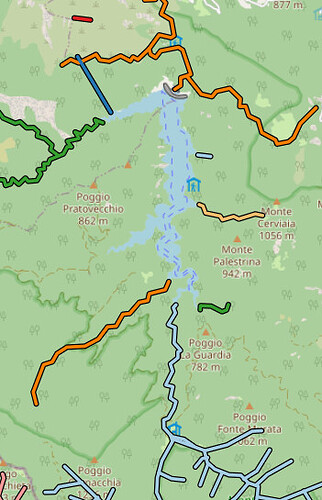@AndersAndersson Thanks for bringing this up since it’s another data issue with rapids tagging patterns worth explaining.
For clarity, I’ve been doing a lot of whitewater cleanup and only in a couple instances did I replace a waterway=rapids line with a node + attribute tags on the river segment. I did not destroy any data, just moved it. Let me illustrate:
It’s nice to map individual rapids as distinct point of interest features. This helps with rendering and geocoding. Rapids have been mapped as individual nodes, lines, and areas. Nodes and areas work well, but lines have been mapped inconsistently.
Some mappers draw waterway=rapids lines laterally along the crest of a rapid:
Some mappers draw waterway=rapids lines longitudinally along the flow of the river. These tend to overlap with waterway=river features.
Sometimes they are glued together, which is difficult to maintain:
Sometimes they replace the river entirely, which is unexpected and removes valuable information like the name of the river:
If we can’t be sure if a given waterway=rapids line is mapped across the river or along the river, then we can’t do things like measure a rapid’s length or render arrows on the downstream side. It would be much better to pick one or the other as standard.
Really, lateral and longitudinal rapids are actually two different types of features. The first is an individual “rapid” where waters flow over a drop. The second is a section of swiftly-moving river that may have a distinct name. As such, I’ve started moving the tags for rapids mapped longitudinally to the waterway=river segment, which has the relevant geometry. The rapid POI itself can then be mapped as a waterway=rapids node, or ideally as a natural=water + water=rapids area. You can still query the river tags if you want to know the length of a specific rapid.
Since no data consumers appear to be relying on the prior tagging pattern, I didn’t feel the need to ask permission before making the change.

